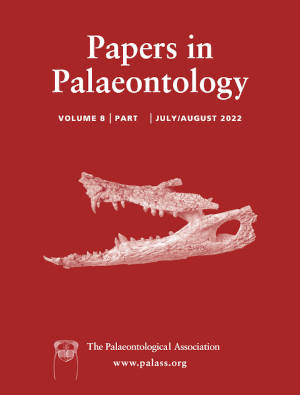Article: Extraordinary Ordovician trilobite Fantasticolithus gen. nov. from Peru and its bearing on the trinucleimorph hypothesis
Publication: Papers in Palaeontology
Volume:
8
Part:
2
Publication Date:
2022
Article number:
e1423
Author(s):
Richard A. Fortey, and Juan C. Gutiérrez-Marco
DOI:
10.1002/spp2.1423
Abstract
Abstract Fantasticolithus isabelae, a new genus and species of trinucleid trilobite from the Lower Ordovician of Peru, developed anterior ventral cephalic ‘props’ that are unique in the Trilobita. Its broad and finely pitted genal prolongations are unlike those of any previously known trinucleid, and closely resemble those invariably present in the unrelated Family Harpetidae, supporting the hypothesis that the two families shared a similar mode of life, as ‘trinucleimorphs’. Fantasticolithus was probably derived from an early trinucleid with a marginal girder, although it resembles younger genera such as Marrolithus in its enlarged anterolateral pits. The new genus provides a natural experiment to test the hypothesis of trinucleimorphs as filter feeders that used a ventral feeding chamber. The role of the pitted marginal fringe as an egress for feeding currents is discussed. Fantasticolithus had an unusual anterior vent that provided a simpler exit mechanism for feeding currents than the pitted fringe. However, the pits were probably important for trinucleids that lacked an anterior arch.
